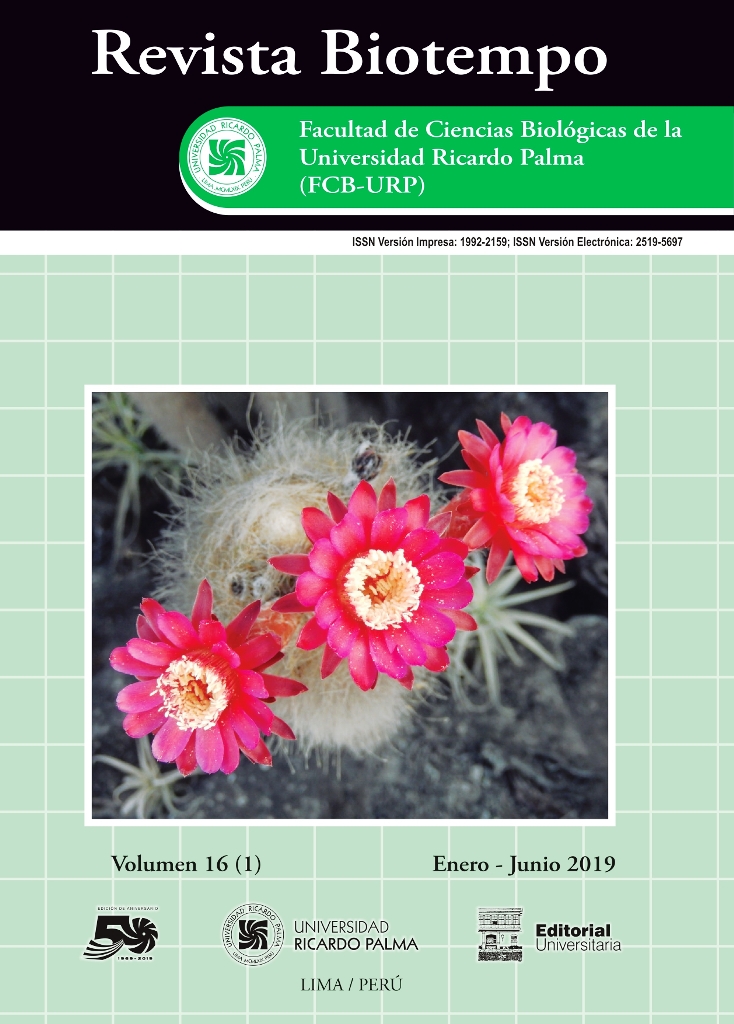MICROBIOLOGICAL, CHEMICAL AND ECOTOXICOLOGICAL QUALITY OF WATERS USED FOR IRRIGATION IN THE YABÚ VALLEY, SANTA CLARA, VILLA CLARA, CUBA
DOI:
https://doi.org/10.31381/biotempo.v16i1.2179Abstract
Water pollution has increased over the years and has been caused primarily by industrial development and population growth. Currently there is a growing concern about the eff ects of using wastewater for irrigation, so the objective of the research was to evaluate the quality of the water used for irrigation in “Valley of Yabu”. Microbiological and chemical indicators were determined. In addition, the ecotoxicity of irrigation water was evaluated using a rapid, simple and economical in vitro bioassay of acute toxicity by using Allium cepa L. bulbs. During the period in which the analysis was carried out, it was noted that the values of total and thermotolerants coliforms were > 0.16 x 103 NMP / 100 mL, which far exceeds those allowed in the reference standards. The contents of nitrite and ammonia show values higher than the concentrations established in the current CS. Th erefore, water is evaluated as not suitable for agricultural irrigation of
crops and vegetables that are consumed directly without cooking. In the acute toxicity test in A. cepa, the water samples analyzed turned out to be phytotoxic at concentrations higher than 25% in the case of Point 1, while the samples corresponding to Points 2 and 3 showed their phytotoxicity after 75%. The results show the need to use a wider battery that includes other biomodels in addition to subchronic and chronic tests.










